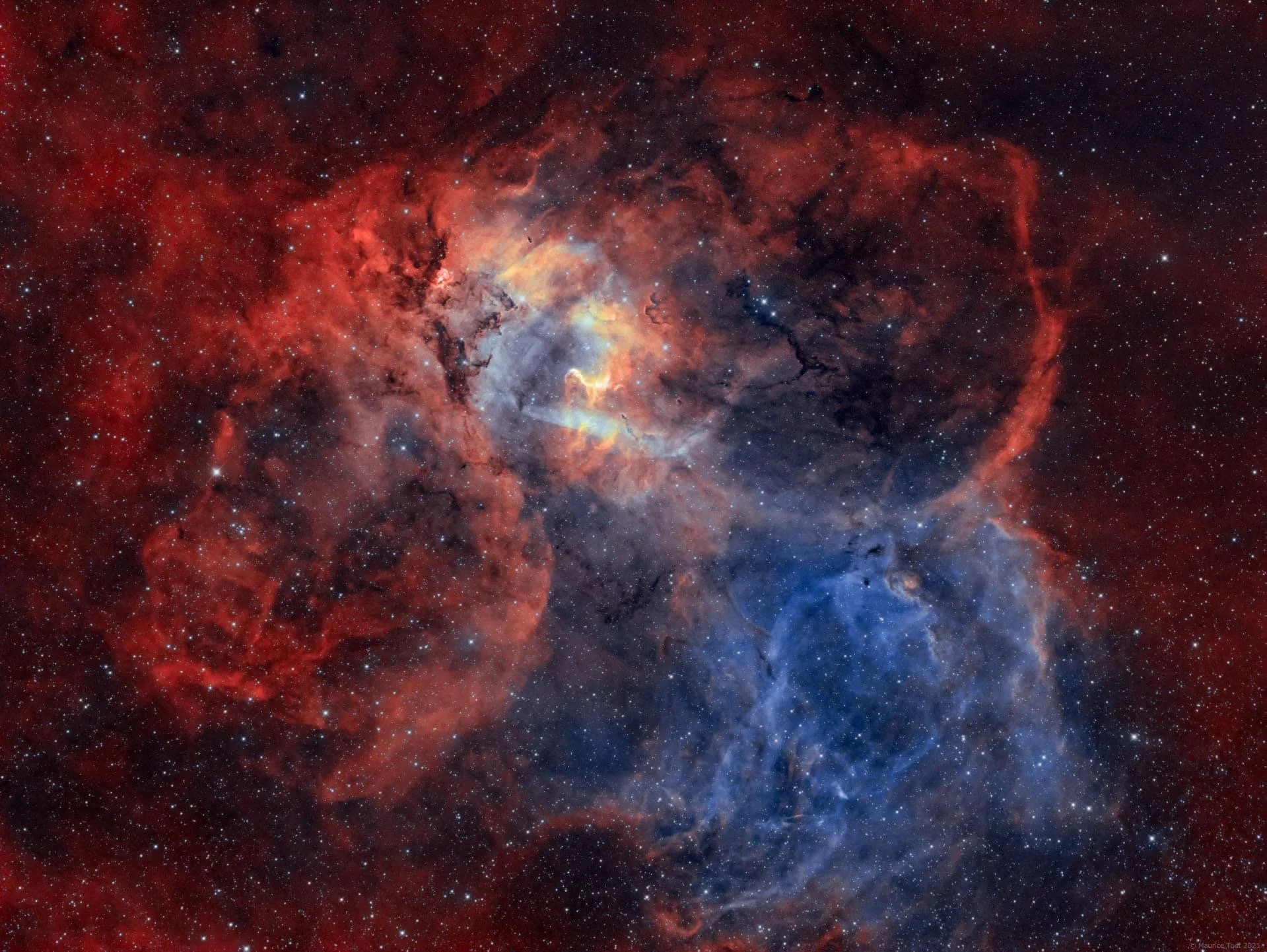Sh2-132 Lion Nebula
About two weeks ago, I processed a monochrome Hα image of this interesting object on the border of Cepheus and Lacerta. Last Monday the sky unexpectedly cleared. I decided to spend the night on acquiring OIII data to create an Hα-OIII-OIII false colour image, where Hα is assigned to the red channel, OIII to the blue channel and a mix of Hα and OIII to the green channel. Although it stayed clear all night, I only used the images captured before midnight. In the area in the Netherlands where I live, the sky severely brightens from midnight to dawn because horticulturalists are then allowed to ignite assimilation lights. Although the used OIII filter has a bandwidth of only 4nm, the light pollution caused by the glasshouse horticulture severely affects the quality (signal-to-noise ratio) of the images. I'll post a separate message to illustrate the difference in sky quality before and after midnight.
What's striking in (false) colour images of this object, is the conical beam that crosses in front of nebulas in the background. Here this beam has a cyan hue in front of yellow/orange nebulas.
Exposure time: 16 hours, 10 minutes (141x 300" Hα, 53x 300" OIII) | Optics: Takahashi ε-180ED f/2.8 | Camera: ZWO ASI294MM Pro (B 2x2, G 120, T -15 °C) | Acquisition: ZWO ASIair Pro | Filters: Baader Planetarium Ultra-Highspeed | Mount: Astro-Physics Mach1 GTO | Location: Zoetermeer, Netherlands | Date: 27 & 28 October and 8 November 2021
Pre-processing in Astro Pixel Processor, post-processing in Adobe Photoshop.
Copyright: Maurice Toet
AAPOD2 Title: Sh2-132 Lion Nebula
AAPOD2 Page Link: https://www.aapod2.com/blog/Sh2-132 lion nebula
Submit Your Photo!


